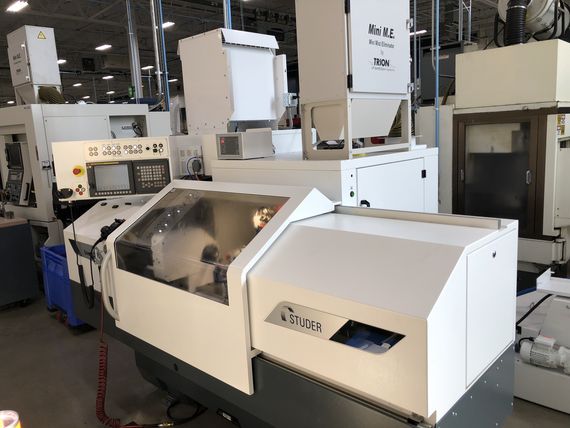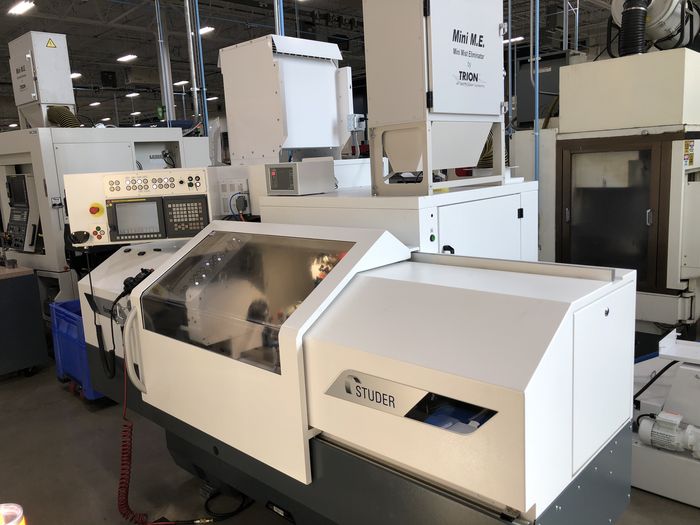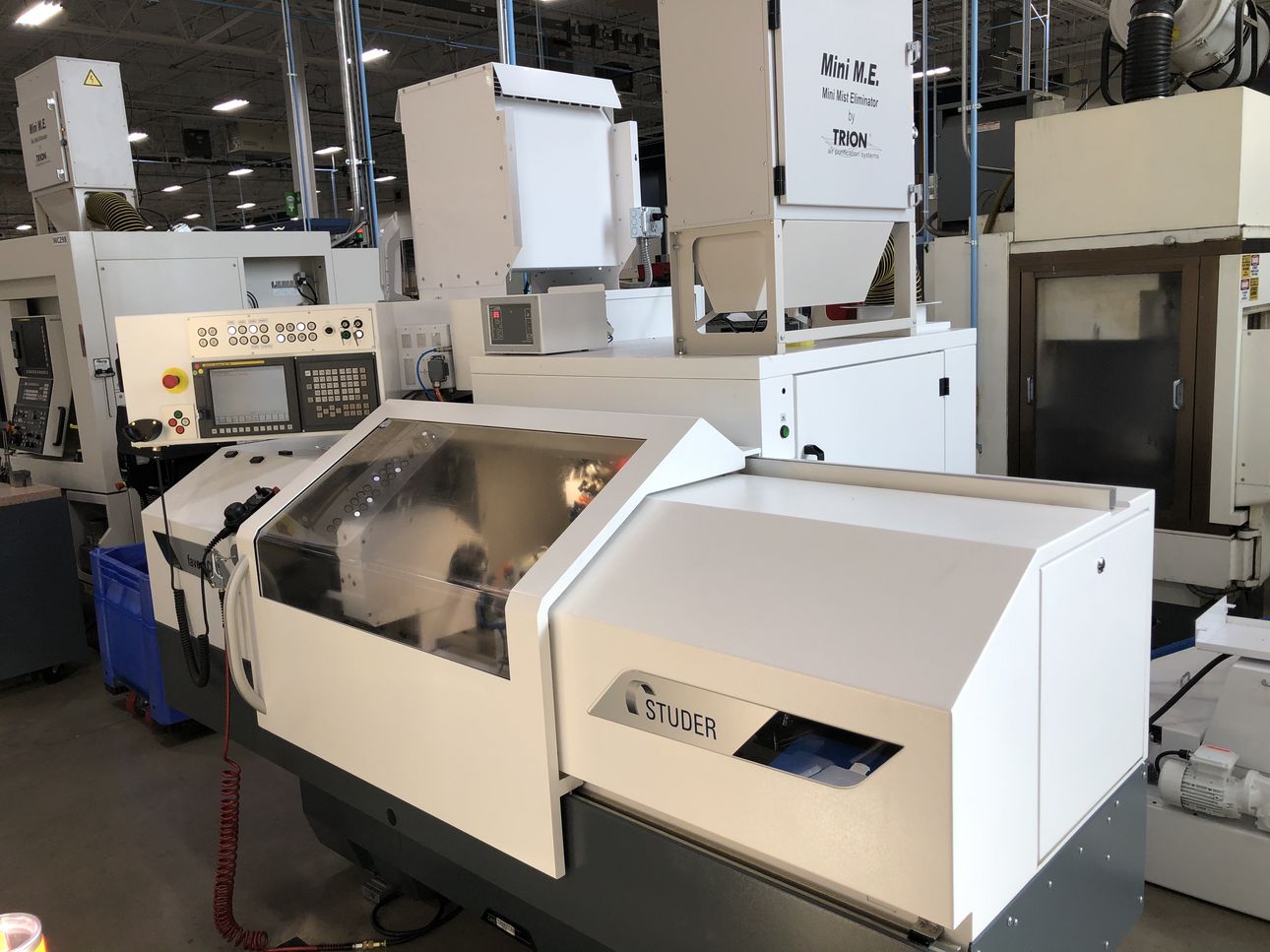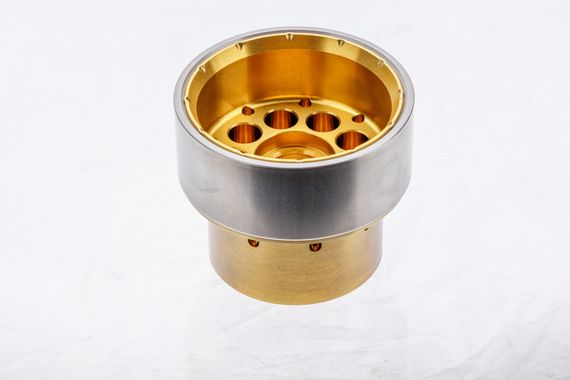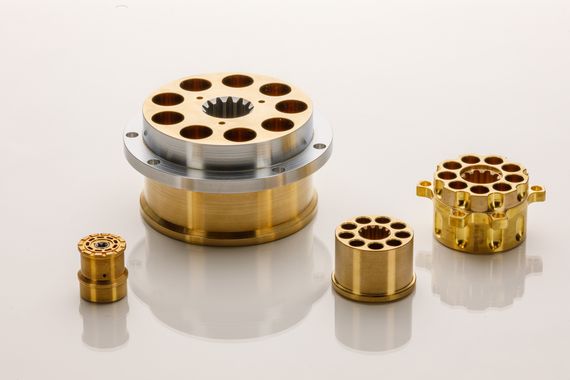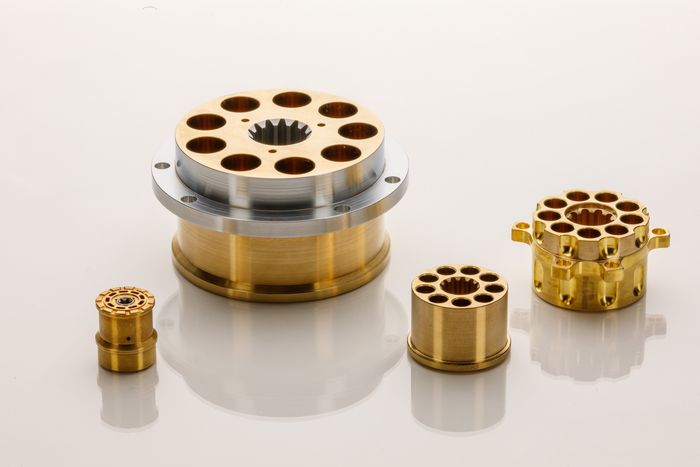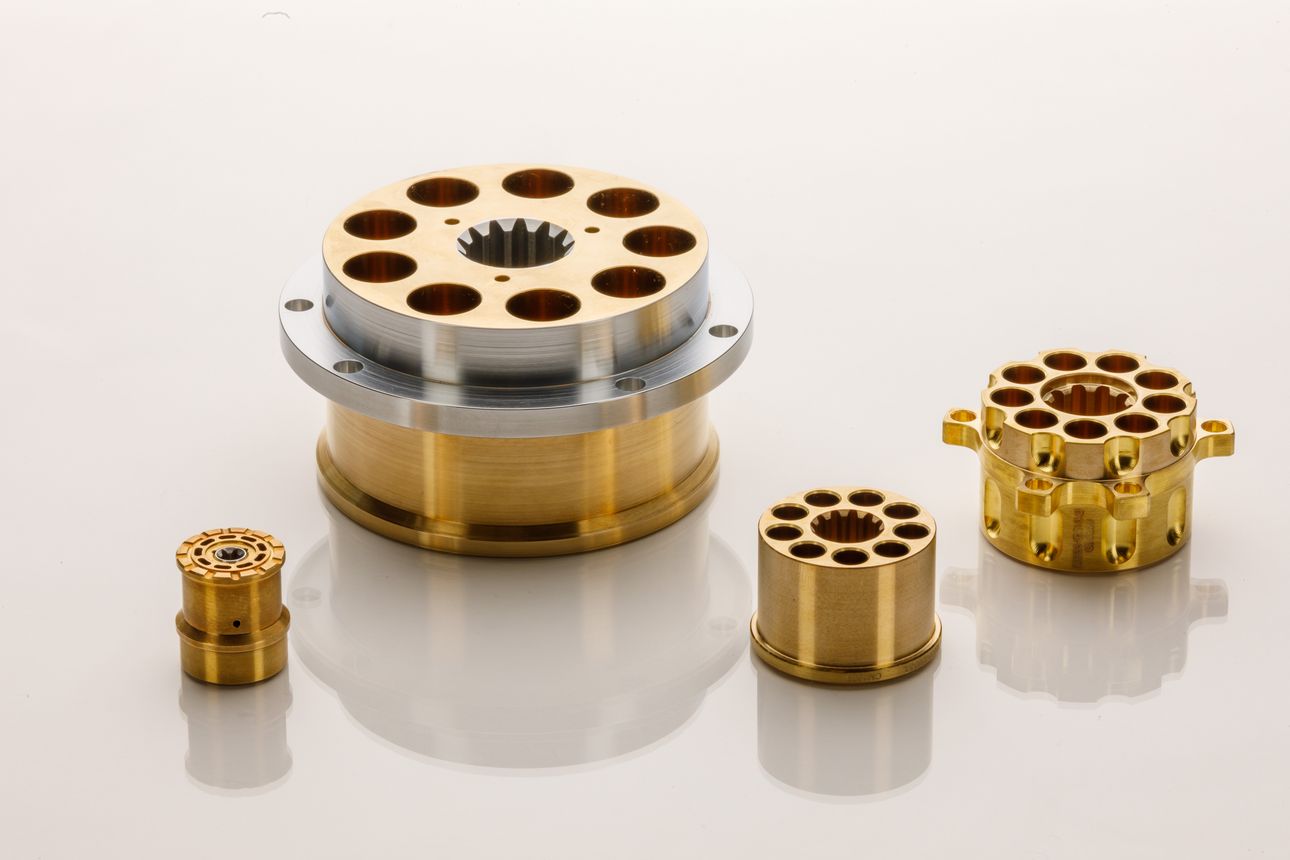C&S Machine Products Inc. in Niles, Michigan, specializes in machining small, difficult, ultra precision parts. The shop routinely holds grinding tolerances in the range of 0.00005" (~1.25 microns), and according to C&S president Dominick Saratore, such tight tolerance parts – those that others are unable to produce – have become the shop’s niche and competitive advantage.
Founded by Saratore’s father Joseph and his partner Harley Cole in 1966 in a garage, C&S performs CNC turning, 5-axis milling, grinding, EDM and Swiss multi-axis turning. Associated operations include honing, lapping, additive manufacturing, laser marking, assembly, testing and cleaning.
In its early days, the shop machined automotive parts for the Bendix and Studebaker corporations. Joseph Saratore later became sole owner, and in the 1980s, C&S began to machine aerospace components and expand its business. The shop recently moved from three separate facilities into a new, state-of-the art, 122,000 ft2 climate-controlled facility with 100 employees and more than 100 advanced machine tools.
Among the critical aerospace assemblies C&S manufactures are hydraulic spool and sleeve valves, and Saratore said that the shop’s components are on nearly every airplane platform running today, both military and commercial. Typical workpiece materials are hardened 440C and 52100 aerospace steels and nitriding steels, in addition to the nickel-base alloys and titanium common in aerospace vehicles. “The parts generally are small enough to be held in one hand,” he added, “and we can often ship 20-40 pieces in a very small box.”
C&S also produces medical components including surgical instruments, implants and makes parts for other high-precision industries such as power generation manufacturing. “We’ll make any part for any customer that needs our kind of tight tolerance capabilities,” Saratore said, “but aerospace is our bread and butter and medical is also a good space for us as well.” C&S Machine meets demanding certification requirements of AS9100 for aerospace manufacturing, ISO13485 for medical parts and NADCAP for certain special processes.
Within C&S’s lean manufacturing part processes, high-precision STUDER CNC grinders from UNITED GRINDING play a key role in helping to expedite production and reinforce quality. “United Grinding is our go-to grinding machine tool source that offers real depth in capabilities. It is a superior organization with superior grinders,” Saratore said.
Most of the shop’s STUDERs are favorit model machines that are engineered for cost-effective individual and batch production of workpieces up to 150kg (330lbs) in weight. The machines feature 8kW (10.7 hp) spindles that accommodate grinding wheels up to 508 mm (20") in diameter and 80 mm (3.1") in width. Center heights on the machines are 175mm (6.9") and, depending on the machine version, distance between centers is 400mm (15.7"), 650mm (25.6"), 1,000mm (40") or 1,600mm (63").
With various options such as in-process measuring system, balancing system, contact detection and longitudinal positioning, STUDER favorit machines can be adapted to other grinding tasks. Their bases are made of Granitan® S103, which contributes to their high-precision performance. For programming at C&S, the StuderPictogramming visual language allows less experienced users to quickly and practically program grinding and dressing cycles for the STUDER favorit machines.
“We use our STUDERs for cylindrical grinding,” Saratore said, “But we are also looking at other projects in the future, using different capabilities.” The shop installed a favorit machine a year ago, another a few months ago, and has another on order, for a total of eight.
C&S describes itself as a low-volume, high-mix manufacturer with typical production runs in the range of 25 to 100 pieces, and long-term agreements with customers generally determine production quantities at C&S. “We are always setting up and changing over to run part families,” Saratore said. “We get the luxury of running the same jobs over and over, but we do not do it in large volumes and don’t get to set up and run something for a month. Typically we will set a job up and run it for the day, and the next day we are running something else.”
C&S serves a well-defined group of customers. “Because we focus in on the tough stuff, we wouldn’t necessarily be the solution for something that is on the easier side,” Saratore said, “That’s not where our niche is.”
C&S concentrates its resources and technologies on the production of highly regulated, extremely tight-tolerance components. According to Saratore, some of the company’s customers specify not only part dimensions, but also manufacturing processes. Those customers prescribe certain grinding processes to avoid putting stress into a part that could later result in cracks.
“Our customers are very specific in what they want,” Saratore said. “Not only do we have to produce to the print, we also have to meet their processing requirements.”
The shop has a catalog of about 500 different part numbers, and Saratore said that some machine shops can make perhaps five high accuracy parts on a consistent basis. “But to be able to do that day in and day out for five hundred part numbers, you have to have a complete depth in your system and people, and your organization has to be robust,” he said.
Saratore credits the company’s investment in technology, facilities, equipment and people for its continued growth and success. “Many shops don’t put all of those pieces together but we do. We produce precision products and also have systems in place to control the processes,” he said.
At C&S, putting all the pieces together starts with the facility and equipment. “Our facility is temperature controlled as well as the humidity and air quality. Every machine tool that we buy is best in class, and we don’t cut corners on equipment, tooling, fixturing, workholding, business processes and systems, employee training and on and on,” Saratore said, “It takes a long time, but all those pieces are critical.”
Saratore believes that C&S and UNITED GRINDING are similar in that they both provide all the pieces necessary for success: “There is not a missing piece. If there are twenty things required to be great, UNITED GRINDING and C&S have all twenty.”
Studer machines represent “a full package: a well-built machine and the software is excellent,” Saratore said, “There are a lot of grinding machines out there that just don’t have the same consistent quality, service, parts or training. They do not have the depth that UNITED GRINDING has.”
C&S Machine plans to keep growing in the sectors it serves. Part of the plan is the creation recently of an advanced manufacturing research and development group. Consisting of a director of advanced manufacturing R&D, an applications engineer, an automation engineer and a program manager, the group solely focuses on advanced manufacturing technologies and how to apply them. C&S is currently on pace to add one advanced manufacturing cell per year, but as the shop grows and evolves, the plan is to be able to bring on two to four cells annually. Saratore said grinding technology from UNITED GRINDING will most likely figure into those plans.




